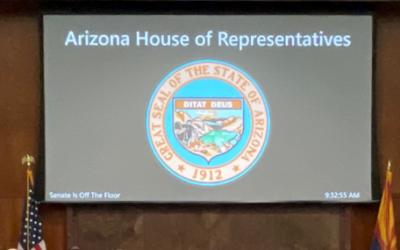By Terri Jo Neff |
Financial eyes are focused on data recently released by the U.S. Bankruptcy Court for the District of Arizona showing August had the highest number of new filings this year, while also being the first month of 2022 to have more new filings than the same month in 2021.
Bankruptcy filings are considered a lagging indicators of financial stress and economic health, and the number of new filings goes up and down from month to month. However, billions of dollars from various federal stimulus programs have ebbed in 2022, meaning no more Paycheck Protection Program, no CARES stimulus checks to individuals, and the end of the federal foreclosure moratorium.
Some Arizona families and businesses may no longer have a lifeboat, according to commercial debt collection company ABC/Aemga.
“Companies that have struggled throughout the pandemic, but were kept afloat by stimulus money and generous lenders, may face trouble during the rest of 2022 and into 2023 once those funds run out, as the Fed continues to tighten its ultra-loose monetary policy by reducing asset holdings and raising the Fed Funds Rate target, and credit conditions start to tighten,” the company warns.
Sectors such as retail, construction, health care, and certain manufacturers adversely affected by higher raw material and labor costs remain particularly vulnerable, while travel, hospitality, commercial real estate, consumer goods, entertainment, midstream oil and gas, and power and other energy infrastructure also face pressure and uncertainty, according to ABC/Amega.
For the first eight months this year, there were 5,879 new filings statewide, down from 6,765 for the same period in 2021. Slightly more than 12 percent of this year’s new cases were filed pro se, or without legal representation.
If the August pace continues for the rest of 2022 the total filings for the year in Arizona will come close to last year’s total of 9,353. By comparison, there were 12,903 filings in Arizona in 2020 and 16,237 in 2019.
The majority of new cases filed in the state as of Aug. 31 this year were under Chapter 7 (4,803) followed distantly by Chapter 13 (1,029) and Chapter 11 (46). There has also been a lone Chapter 12 filing.
While households and businesses in Maricopa, Pima, and Pinal counties lead in filings of as Aug. 31 at 3,887, 896, 439 respectively, Yavapai and Mohave counties have similar totals at 151 and 146 respectively.
The three border counties of Cochise, Santa Cruz, and Yuma have 80, 42, and 106, respectively. Meanwhile, Apache (4), Coconino (29), Gila (28), Graham (17), Greenlee (3), LaPaz (7), and Navajo (44) represent less than 2.3 percent of all filings in the state as of Aug. 31.








